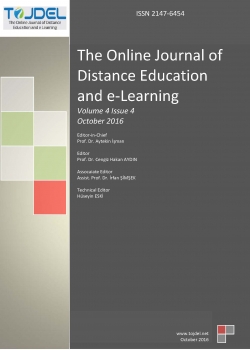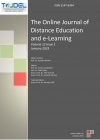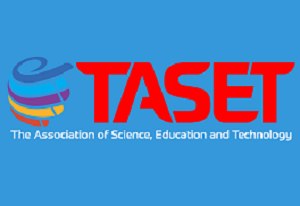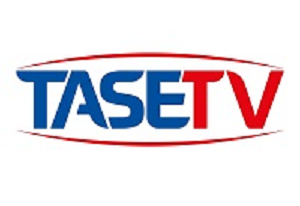TOJDEL - Volume 4 - Issue 4 - October 2016
 AN EXPLORATION OF ARAB STUDENTS OPINIONS ON HIGHER EDUCATION SYSTEM IN ROMANIA
AN EXPLORATION OF ARAB STUDENTS OPINIONS ON HIGHER EDUCATION SYSTEM IN ROMANIA Sorin Ionescu, Florin D─ān─ālache, Iuliana Grecu
Abstract:
The article analyzes how the Arab students adapts to the education system
and daily life in Romania. First it shows the attraction of Romanian schools for Arab
students to attend graduate, masters and PhD studies. Then identified some Romanian
cultural particularities and how they consider be. Based on the responses to a
questionnaire identifies Arab students opinion about how they are received by the
Romanian colleagues, and by society in general. Likewise identified Romanian students
opinion about their fellow Arabs. At the end of the paper, shows some changes that
have been made in teaching to ensure the performance of all students, including those
Arabs.
 AUTOMATED ASSESSMENT OF KNOWLEDGE AND SKILL ACQUIRED BY EŌĆÉLEARNERS THROUGH ADAPTIVE TESTING
AUTOMATED ASSESSMENT OF KNOWLEDGE AND SKILL ACQUIRED BY EŌĆÉLEARNERS THROUGH ADAPTIVE TESTING Nandakumar G S, Thangasamy S, Geetha V
Abstract:
Automated assessment of very large numbers of e-learners registered for
popular online courses is a critical issue in the process of e-learning. Due to the
flexibility offered to e-learning through online courses, the tests taken by learners at
their own chosen time schedules with varying levels of preparedness need to be
designed to provide reliable and fairly accurate measurement of the learners’
proficiency, the latter found to vary over a wide range. The experience with the
adaptation strategy employed in the test scheme adopted in a particular course, the
question bank creation and validation issues and the test score calculation options are all
discussed with their relative merits clearly brought out.
 MEASURING THE IMPACT OF STUDENT DIVERSITY ON PERFORMANCE WITH CLASSROOM RESPONSE SYSTEMS
MEASURING THE IMPACT OF STUDENT DIVERSITY ON PERFORMANCE WITH CLASSROOM RESPONSE SYSTEMS Stephan SCHMUCKER, S├Čnke H├äSELER
Abstract:
The diversity of undergraduate students within a given lecture is on the
increase – both in terms of their personal traits and their performance. The latter
development presents a challenge to lecturers, who may have difficulty adapting their
teaching methodology because the students’ actual performance often materialises only
at the end of the term.
Based on practical experience, this paper shows how classroom response systems, using
so-called ‘clickers’, can be employed to meet this challenge in several ways. A brief test
of the material already taught in the first few lectures can provide the lecturer with a
rough impression of the performance level in the class right at the start of the term. Yet,
more interesting information is to be obtained from a simultaneous survey of potentially
performance-related characteristics of the students. Simple statistical analysis will then
reveal whether and, if so, which characteristics actually drive student performance. In
the best case, the insights thus gained can be used to adapt teaching styles. The paper
further argues that short response periods should suffice to elicit meaningful
information from the students, meaning that the procedures discussed here do not
consume too much lecture time.
 PREDICTORS OF STUDENT PREFERENCES FOR BLENDED LEARNING: AN EMPIRICAL INVESTIGATION
PREDICTORS OF STUDENT PREFERENCES FOR BLENDED LEARNING: AN EMPIRICAL INVESTIGATION Gheorghe MILITARU, AncaŌĆÉAlexandra PURCAREA, OliviaŌĆÉDoina NEGOITA
Abstract:
This study investigates engineering student preferences for blended learning
adoption in higher education. No major study to date, however, has taken into
consideration the influence of interaction, digital technology, social presence, and
internet self-efficacy on student preferences for blended learning approach. This study is
based on a sample of 126 students who can use Moodle platform at University
Politehnica of Bucharest in Romania. Hierarchical multiple regression was employed to
test hypotheses. Results revealed a significant effect of most predictors on student
preference for blended learning. The findings are expected to enhance the understanding
of blended learning for teachers and students.
 SELFŌĆÉMOTIVATED PACKET SHIFTING IN MULTICHANNEL NETWORK
SELFŌĆÉMOTIVATED PACKET SHIFTING IN MULTICHANNEL NETWORK S.Manohar, S.Selvakumar
Abstract:
The range admittance in Adhoc Network by allowing the inferior user nodes
to use the channel as extended as the broadcast does not affect the main user. This paper
involves a new Point squash based Precedence Development system with Selfmotivated
Packet Shifting which is planned for dispersed multichannel system to
improve the system performance. It also presents the Channel Intelligence and essential
Intelligence techniques before the progress of the channels. Based on biased queuebalancing
and entropy flow control which might be suited for self motivated changing
packets in Adhoc networks, this system proposes a Self motivated Packet Shifting
algorithm for most favourable packet shifting between different channels during the
packet broadcast. The projected protocol will directly observe the channel to make a
decision where the packet is to be shifted within the n-channels for most favourable
throughput. Factors of these projected systems are configured to sustain the network
permanence. The results show that the proposed system improves the presentation in
conditions of throughput and packet delivery ratio by borrowing the certified range and
protects main users from interference.
 THE DEMOGRAPHIC FACTORS ON ONLINE/DISTANCE PROGRAM OF ASHE FOR DEEMED UNIVERSITIES IN TAMIL NADU, INDIA: SERVQUAL APPROACH
THE DEMOGRAPHIC FACTORS ON ONLINE/DISTANCE PROGRAM OF ASHE FOR DEEMED UNIVERSITIES IN TAMIL NADU, INDIA: SERVQUAL APPROACH K R KUMAR, G BARANI
Abstract:
This study attempts to examine the Demographic Factors on Online/Distance
Program of ASHE inflecting service quality dimensions (tangibility, responsiveness,
reliability, assurance and empathy). Furthermore, this study is also examining critical
factors in service quality dimensions (tangibility, responsiveness, reliability, assurance
and empathy) that contribute most to the satisfaction of the students. This study was
conducted using a set of questionnaire to 610. The study will provide results from
empirical test of these relationships. The empirical results of this study can provide
support for the Parasuraman’s SERVQUAL (1985), which related to the factors
contributing to students’ satisfaction.






